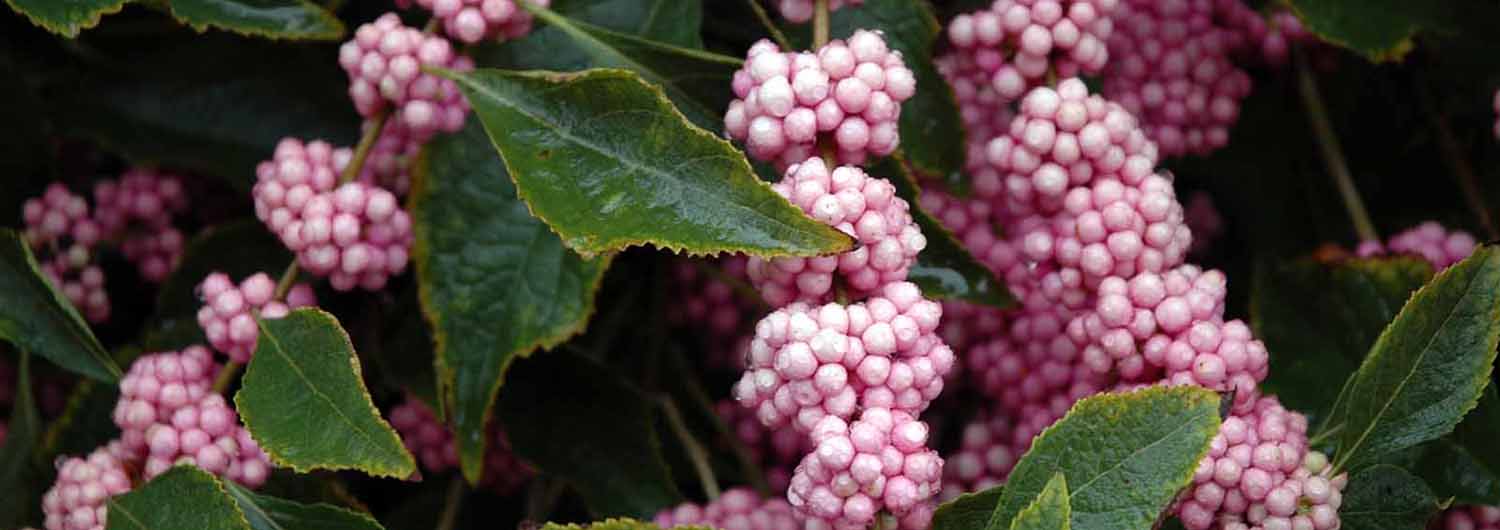Callicarpa americana 'Welch's Pink'
American beautyberry
Ornamental fruiting plants are used all too infrequently in the landscape with the exception of a few hollies and a handful of other plants. An often overlooked but exceptionally showy group are the beautyberries (Callicarpa). Most beautyberries are native to Asia but there are a few that occur naturally in North America as well. One of the showiest of this group, C. americana, or American beautyberry is native to the southeastern United States and is among the easiest of plants to grow.
Callicarpa americana is native from Maryland south to Florida and west to Oklahoma and Texas. It typically makes a large shrub to about 6' (8') tall with lavender-pink flowers in summer followed by bright magenta-purple ¼" fruits in fall. The dense clusters of fruit make a ball 2"–3" in diameter which completely encircle the stems at every leaf node. White fruiting forms are also found in the wild.
Plantsman Matt Welch found a pink fruited form in East Texas. We received our plant from David Creech of the Mast Arboretum at Steven F. Austin University in Nacogdoches, Texas. This selection was thought to be a hybrid between the typical purple form and a white berried plant. Interestingly though, all seedlings from 'Welch's Pink' are true to type and will be pink-fruited—not the expected outcome if this were truly a hybrid. 'Welch's Pink' has pink flowers throughout the summer followed by pastel pink fruits from September lasting well into winter when the birds will eventually pick it clean.
Pink American beautyberry will grow in conditions ranging from shade to sun and will tolerate both dry and very wet soils making it an excellent candidate for rain gardens or most any spot in the garden. In exposed, dry sites the leaves will wilt during the hottest parts of the day and may burn along the edges. Fruiting is best in a bright location but the berries will often fade a bit if the sun is too intense.
'Welch's Pink' beautyberry does not seem to grow quite as large as the species but is otherwise similar in most aspects. It can be pruned during winter after the fruits are gone to control height and shape. It is easy to grow in most landscape situations and is a welcome addition to wildlife gardens, native gardens, and anywhere where late season and winter color is desired. When planting, make sure to keep your beautyberry watered until it is established, generally for about the first year. Once established, it should tolerate most conditions and is mostly pest-free.
Additional Resources
Mark Weathington, director, discussed Callicarpa americana 'Welch's Pink' in his
"Bullet Proof Trees and Shrubs for the South" Gardening in the South presentation on February 1, 2020.
Additional photographs of Callicarpa americana 'Welch's Pink' can be found in the JCRA's Photograph Collection.

